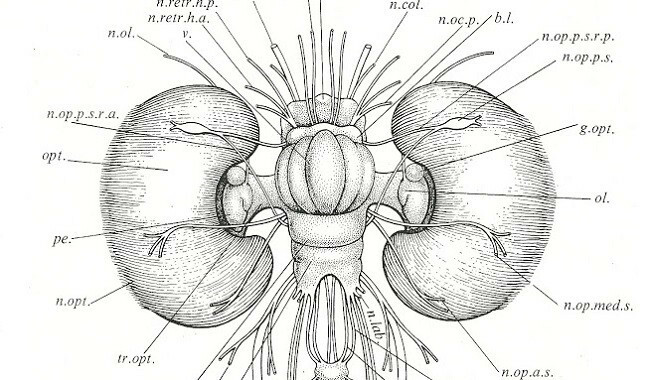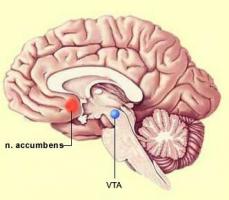The brain of the octopus: one of the most intelligent animals
We live on a planet full of fascinating living things. Beyond the human, who has been able to build entire civilizations with technological frameworks and social skills like no other, other species also display incredible skills and characteristics.
There are birds capable of flying at tens of kilometers per hour, mammals that are larger than a small building, and cats that can detect prey in complete darkness. Skills worthy of any comic book superhero.
But among the extensive biodiversity that still populates the earth, unfortunately less and less, lives an animal whose properties are especially noteworthy: the octopus, of which some 300 different varieties have been identified (cephalopods).
In this article we will stop to analyze what makes it so fascinating, with a special emphasis on the anatomy and the properties of the octopus brain, an organ that endows it with a unique cognition.
- Related article: "What is Ethology and what is its object of study?"
What is the brain of the octopus?
The first thing that stands out when looking at the octopus brain is that
it is, by far, the largest of all those possessed by invertebrates. Thus, it dominates at the top of the pyramid an entire category whose representatives number in the tens of thousands (about 55,000). In addition, it has the highest ratio in the equation of the relative weight of its brain with respect to the body, within this same classification, a common indicator to infer the intelligence of any being alive. This is a representation of it, which appears in The Anatomy of the Nervous System of Octopus Vulgaris, by J. Z. Young:
The ratio between the size of the octopus's body and its brain is similar to what can be seen in mammals. such as whales, which have been able to demonstrate great intellectual gifts and social skills sophisticated. In addition, the number of neurons (raw) is close to that of a dog, an animal that has accompanied man since the dawn of time and stands as one of his most faithful companions. This fact represents an evolutionary exception that has attracted the interest of the entire scientific community.
Its nuclear brain, embedded in a cartilage capsule inside its head (it has no bones), represents only a discrete percentage of the total extent of the nervous system. The rest of the neurons that make it up are located in its tentacles., arranged as interconnected ganglia (minibrains), and giving shape to a highly complex constellation of cells (100,000,000-500,000,000) that react tremendously quickly to triggering environmental circumstances, which forms a system unique in zoology.
If we analyze the distribution of their nervous system, we observe that only 10% of it is located in the area that is predictable for mammals: the inside of the head. 30% is located in two large lobes (15% for each case) that border its lateral surface (behind both eyes) and whose function is processing visual stimuli. Finally, the remaining 60% is distributed among all the tentacles, so that the highest percentage of neurons available to this animal is present in almost all of its body mass.
In the brain of the octopus, aligned contiguously, there are organs that allow the animal to orient its position in space in places that light cannot reach (because some live in the abyssal depths), which is complemented by a pair of extraordinarily dark-adapted eyes (and similar in structure to those of the humans). We talk about statocysts; that they share with species such as bivalves, echinoderms and crustaceans.
In general terms, the octopus has a multiple brain, and not just with a nerve structure located inside its head. This organ is distributed throughout the entire body, forming ganglia that control each of its extremities, and that endow it with enormous adaptive capacity.
It is a structure different from that of mammals, an evolutionary "alternative" that could provide us with information about forms of consciousness that still escape our comprehension (and that have recently been used to design artificial intelligences robotics).
the intelligence of the octopus
If we go back to the evolutionary history of octopuses, we find that they represent an example of extraordinary intelligence not only in the category to which they belong, but in the animal kingdom in its set. They are living beings older than the dinosaurs themselves, who have had the opportunity to survive for millions of years to forge skills refined cognitive skills, and which constitute one of the greatest examples of past intellect to which we can access
Studies on this issue have shown that are able to use tools (like coconut shells to hide in) and learn by observing other octopuses solving a problem, keeping what they assimilate for days without having to rehearse it. In addition, the octopus (in its more than 300 species) has a unique ability: each of its tentacles can "think" for itself.
More specifically, when an octopus observes a situation in which it has to act (a prey to feed on or a predator to flee from), sets in motion a reaction in which each of the parts of your body participates, in order to determine the most efficient pattern of behavior. In this way, and due to the positional multiplicity available to it (since it lacks joints), it is capable of select a huge variety of actions to solve problems (from opening jars to getting out of mazes complex).
The process that is set in motion is different from that of human beings. In our case, the demands of the situation are compared with a restricted body schema (rigid and poorly articulated bones), which translates into limited reactions to solve situations. The octopus is so flexible that it does not need to consider its body limits, so it only stores behavior patterns that are activated when needed, thereby offering a faster and more effective response to deal with environmental demands.
In addition to all this, the brain distributed in the tentacles can establish communication with the rest of the octopus' limbs, so they coordinate without becoming entangled (which would be life-threatening). This is because each of the ganglia not only connects to the centralized brain, but also to the others, thereby enabling extraordinary fine motor skills. Everything is enhanced by the fact that the brain located in the head hardly participates at the moment in which the suction cups of the rest of its appendages act, which have their own free will.
It has been observed that the section of one of the tentacles (they can mutilate themselves when trying to escape) does not imply that it passes into "die" immediately, but would continue to move and act with purpose for about an hour, confirming that it has autonomy. For this reason, despite being separated from the body, they can make decisions such as camouflage (safeguard itself from danger) and recognize a different tentacle as a part of itself (through a kind of chemical receptor located in the suction cups).
- You may be interested in: "Neuroethology: what is it and what does it investigate?"
Octopus personality
In addition to possessing great intelligence, there is evidence that cephalopods have stable personality traits that differentiate them in a very notable way, and that even have a tendency to group according to the degree of similarity (demonstrating social type preferences). Some of them are reclusive and spend most of their time locked up in caves, which plugged with rocks to increase their privacy (their elasticity allows them to "sneak" into almost any hole).
There are also very aggressive octopuses, to the point of being able to attack and devour other octopuses. Besides, they can form an idea of the human beings with whom they feel comfortable or uncomfortableWhat do they like or dislike? forging a memory that lasts for months or even years (showing a large store of long-term memory). Being animals that do not have a long life expectancy, it can be said that they create memories that extend throughout their life cycle.
Finally, it has been shown that octopuses are prone to play with other members of their species, being This is a behavior that has been classified as an indicator of high intelligence in the field of ethology. And it is that it is an action that does not intend to guarantee survival nor is it explained as a reaction in the face of immediate environmental contingencies, but its purpose is enjoyment and leisure without further claim. This recreational habit is observed exclusively in the most complex species, especially among vertebrates.
Other fantastic things about octopuses
Up to this point, it has become clear that octopuses are fascinating animals. Beyond its history (which goes back 33,000,000 years), from his surprising intelligence and his ability to have his own personality; They also have a series of additional characteristics that make them one of the best animals adapted and prepared for survival (after all, they have been doing it for a long, long time). time).
Thus, for example, they are capable of perfectly camouflaging themselves in the environment, of propelling ink to avoid a predator that has been able to detect, to attack their prey with a powerful beak and to poison any excessively strong fish with paralyzing toxins. trusted. It could be said that he is one of the great kings of the ocean… in fact, they even have blue blood! And pumped by a total of three hearts, nothing more and nothing less.
In conclusion, octopuses remind us that we live in a wonderful world, and that nature is capable of molding authentic works of engineering whose presence will always fascinate the curious being human. It is our responsibility to ensure the health of our planet, so that they can continue to stimulate the imagination of future generations.
Bibliographic references:
- Guglielmino, E. and Tsagarakis, N. (2010). An octopus anatomy-inspired robotic arm. International Conference on Intelligent Robots and Systems, 18(22), 3091-3096.
- O'Brien, C.E., Ponte, G. and Fiorito, G. (2018). Octopus. Animal Behavior, 4(2), 1-8.

